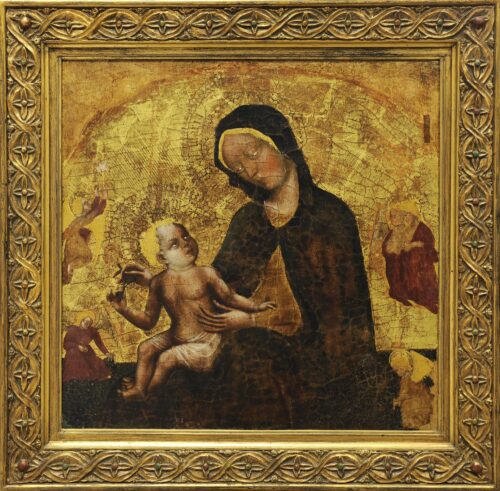| Περιγραφή τεκμηρίου: |
Despite the fact the artist was then unknown and the work in poor condition, this painting was purchased by the National Gallery in 1952 for the aesthetic value with which it is so fully imbued. In 1978 Cesare Brandi, in an article he wrote for The Burlington Magazine, attributed this work to Gentile da Fabriano and dated it to around 1418. Then Roberto Longhi and Federico Zeri attributed it to Zanino di Pietro while Keith Christiansen, who agreed with their attribution, dated it to around 1405-1410. Many of his works, such as the one at the National Gallery, have been attributed to Gentile da Fabriano, which points to the influence these two painters had on each other, while the influence of Michelino da Besozzo, who worked in Venice until 1410, is also obvious. The Virgin Mary with Divine Infant and Angels (a subject often found in the works attributed to this painter) is characterized by the elegance and charm of its late-Gothic style. Following an iconographical method very widespread at the end of the 15th and the beginning of the 16th century, Madonna dell'Umilta, in which the Virgin Mary is depicted sitting on the ground, the Virgin Mary in this rendition is painted in a flowering field and holding the Divine Infant on her knees. On their artistically rendered halos can be very easily read the inscriptions: Santa Maria Mater Dei for the Virgin Mary, and Jesus Nacarenum rex Judeorum for Christ. On the left their hands are joined in a complex unity with the stem of a flower (today destroyed) which must have been a rose, symbol of both the Virgin Mary and the Divine Passion. Surrounded by five angels, done on a smaller scale, we see the two on the right in an attitude of prayer, a third stretching his arms in praise to the heavens, while the other two, at the bottom of the painting, are gathering flowers.
|
